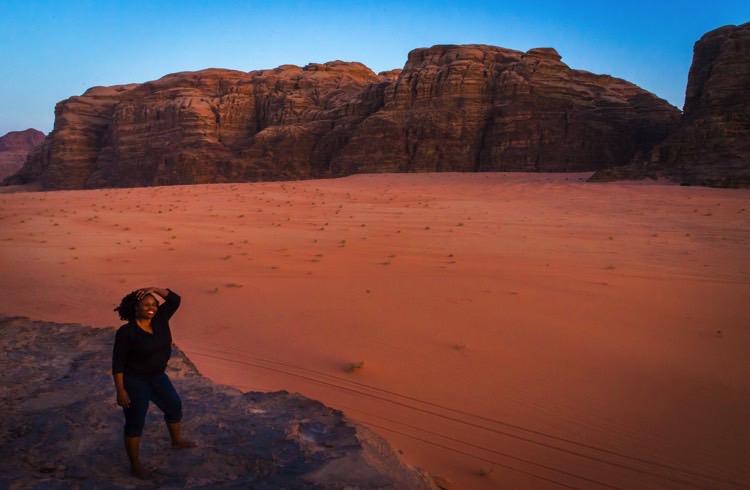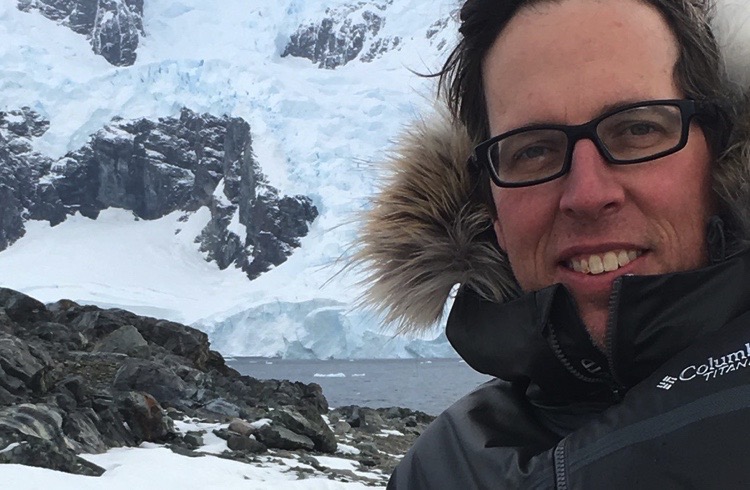Wondering how to start your story with a bang? Professional writer, and Travel Writing Scholarship judge Lola Akinmade Åkerström shares her tips to instantly hook readers from the very first line.
 Photo © Lola Akinmade Åkerström
Photo © Lola Akinmade Åkerström
- Begin with a stressful situation
- Begin with something simple
- Begin by placing the reader at the heart of the scene
- Begin with an assertion
- Begin with an active character
The best travel stories often start with strong opening sequences that skillfully pull the reader right into the story. To kick your travel writing skills up a notch, here are five powerful ways you can start your narratives. I am also including examples from my own work to help guide your learning experience.
Begin with a stressful situation
Example 1 - “The sound of tiny spikes on our wheels crunching through
In this piece titled “Racing on Thin Ice”, I talk about my first time going ice-racing in a beat-up Volvo on a frozen lake in Swedish Lapland.
Example 2 - “The eerie crackling of breaking ice. The crushing sound of iceberg meeting iceberg, slow-moving giants the size of five-story buildings. The howling of sled dogs piercing through the silent night. Greenland awakens all your senses…”
In this piece, I immediately take the reader on a sensory journey to Ilulissat, Greenland, which is known as the iceberg capital of the world.
By transporting the reader to the middle of a stressful situation, it immediately heightens the tension they will feel as they start reading through the story. They become invested in seeing how you overcome or succumb to the situation you find yourself in.
Begin with something simple
Making a simple declarative sentence is one way of piquing interest. What does the writer know that the reader doesn’t yet? This can encourage the reader to stick with the story to figure out why the writer made such a bold statement.
Example 1 – “I know what’s coming.”
In My Little Green Book, I talk about what the world was like for me when I traveled on my Nigerian passport. That declarative statement was about what I knew I would encounter – yet again – at different foreign passport control stations.
Example 2 – “By the time I realized my mistake, it was too late.”
I wrote about the hidden dangers of selfies while traveling and I start with a personal experience of mine.
Are you an aspiring travel writer? Learn more about our Travel Writing Scholarships.
Begin by placing the reader at the heart of the scene
Like travel photography, travel writing is also about capturing a sense of place as well through words and descriptions. By transporting the readers through showing and not telling. You can use the present or past tense, as long as you start right in the middle of the action.
Example 1 – “I have never seen an animal with such stamina. Three kilometers down a dusty dirt road and the hyena in front of us is still running. Our jeep slowly follows the scavenger, as quietly as heavy tires crushing pebbles allow. It is barely dawn, and we are heading towards
Here, I bring the reader right into our jeep, and the middle of the action, as I make my way to an early morning hot-air balloon ride in the Serengeti.
Example 2 – “My friends and I lay sprawled along the rocky narrow trail, utterly exhausted. With daypacks as pillows and sunhats half-covering our eyes, we had completely succumbed to fatigue. Our legs were failing us, muscles tensed from such unfamiliar, grueling exercise. My chest kept expanding wildly, trying to swallow as much of the thin air as it could. I’d done everything I was told to do, from drinking coca tea to chewing the plant’s leaves to help with the high altitude. But even time-tested remedies wane as one’s psyche takes over. Forging on was impossible at this point. I had mentally collapsed.”
In From Manicures to Machu Picchu, I talk about hiking the Inca trail and, even though
Begin with an assertion
Unlike the previous tip of a simple declarative statement, which is often based on strong past experiences (both negative and positive), this tip feels more like musings. Here, you are asserting observations or sharing a general anecdote about an experience.
Example 1 – “Whale meat. Blubber. Seal. Eider (sea duck) … The first time I dug into these was in Greenland’s pint-sized capital Nuuk (population 17,000), and it initially felt like checking off items from an endangered species list.”
In a piece that explored Greenlandic Inuit cuisine, my opening assertion isn’t a declarative statement but rather, a casual observation.
Example 2 – “It’s so easy to take Italy for granted. So easy to stroll across its centuries-old cobblestone piazzas, look past frescoes older than the United States of America, rush by history-laden buildings, intricate details, corners, nooks, and crannies.”
Here, I am making a casual statement about just how beautiful Italy and its historic Renaissance architecture truly is.
Begin with an active character
Another way of getting right into the story is by introducing key characters at the beginning. They can either be doing something, interacting, or speaking, and this can help frame your narrative.
Example 1 – “My Portuguese seatmate, a small-framed man, with sunken cheeks and blond highlights streaked through thinning black hair, asks me a question 15 minutes before touchdown. Our only other interaction had been a quick acknowledging nod shared four hours ago while boarding in Frankfurt.”
This opening sequence can shed a lot of light on a character just by describing what they are doing or saying. In this case, my seatmate is about to ask me a question after ignoring me for four hours.
Example 2 – “You need warmer clothes,” Nils tells me at our very first meeting.”
In Life Lessons from Sweden’s Reindeer Herders, I begin the piece with a key person, Nils Nutti, telling me that the winter gear I was already donning wasn’t enough to survive double-digit temperatures below zero.
So, there you have it. These five opening tips can help you capture the attention of your readers in an engaging and intriguing way. However, sustaining that attention for the rest of your narrative is another story.
Related articles
Simple and flexible travel insurance
You can buy at home or while traveling, and claim online from anywhere in the world. With 150+ adventure activities covered and 24/7 emergency assistance.
Get a quote


4 Comments
All good ideas. I only have one comment. Example 2 in the stressful situation category only mentions one sense, that of hearing. It might also have included sight (white light?), smell and taste (a comment on the fact that they’re non-existent? ) , feel (air on face?).
I love all the ideas. You are literally a Travel guru :) I specifically like the first one the most ie begin it with a problematic or stressful situation because that immediately caught the attention of the reader. Thank you for all the lovely ideas I am planning to start a travel blog of mine, good thing is I now know I can always look up to your blogs and writing style and learn so much
SEO would dictate that your first words are your chosen keywords. I find this so frustrating! The rule does not lend itself well to imaginative writing. Sometimes I don't want to tell my readers what my post is about right away. I want to keep them intrigued, in suspense, for a little while. SEO is a bully!
Hey,
Nicely done and written. Loved your article. Traveling is the thing that expands our knowledge and experience. We get to know about more new things, people, countries, food, culture, and many more things.